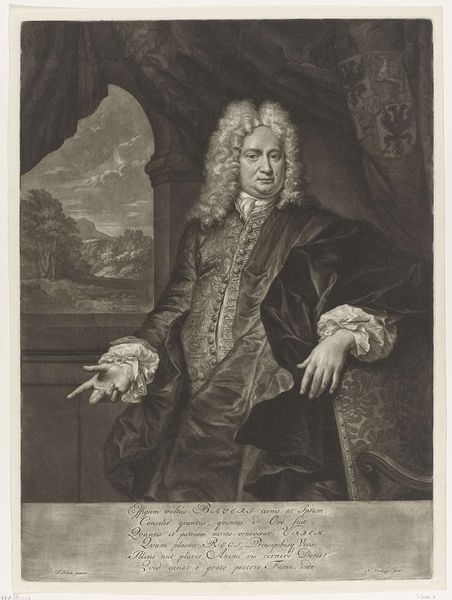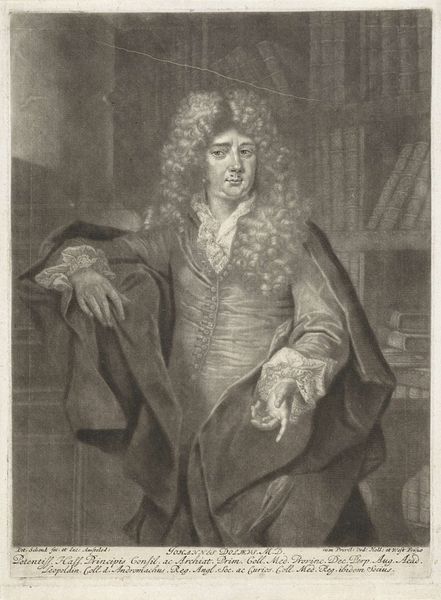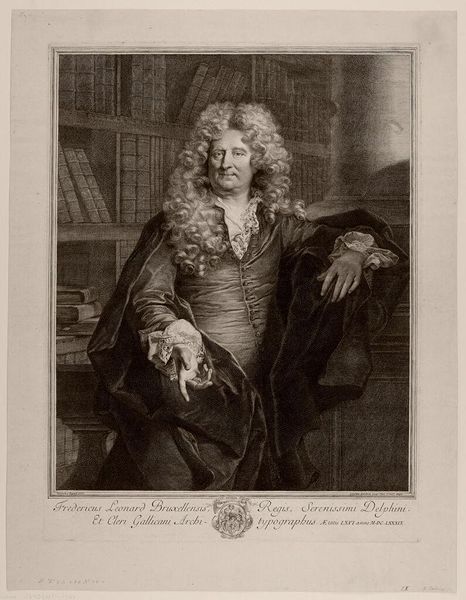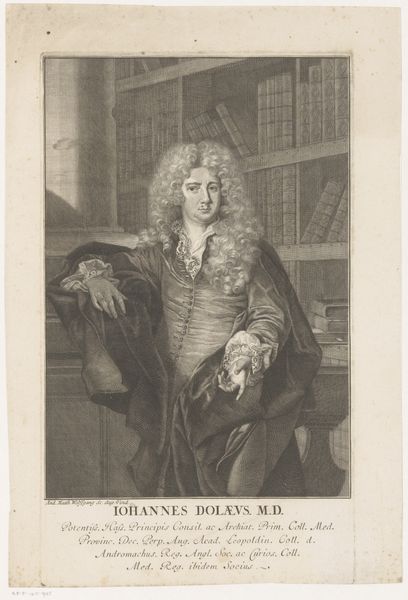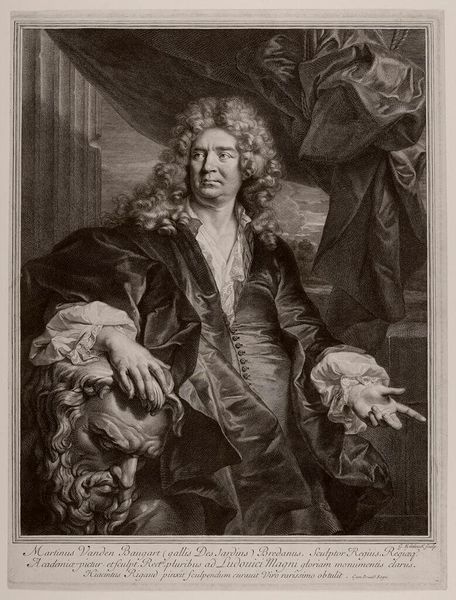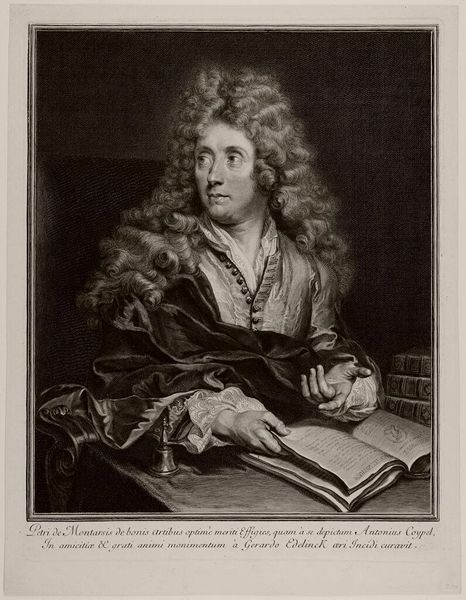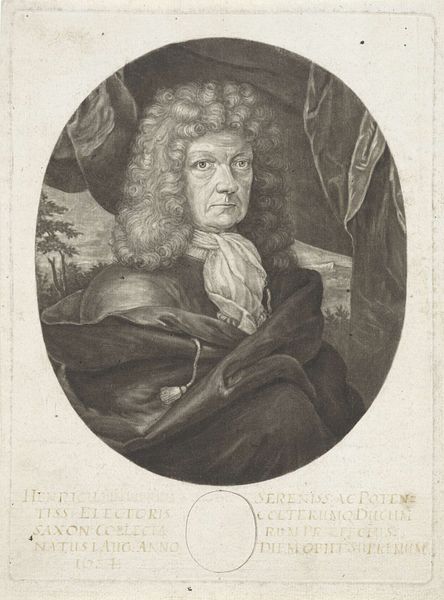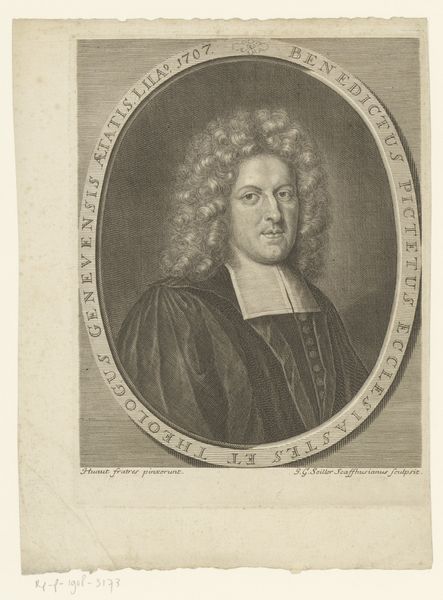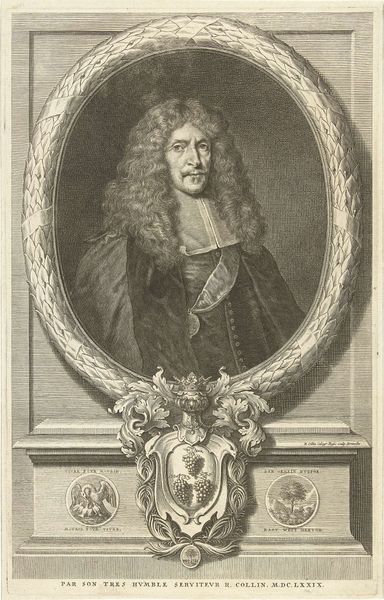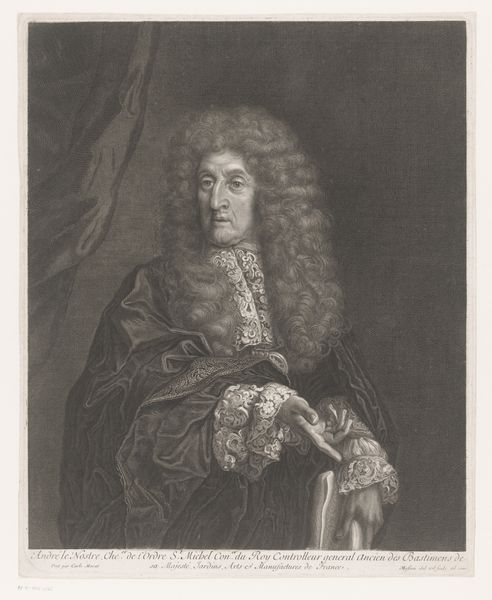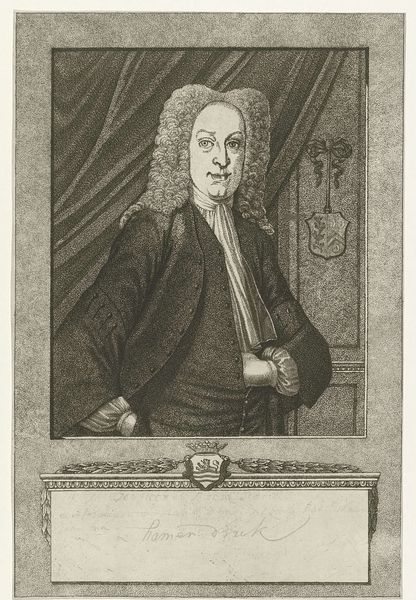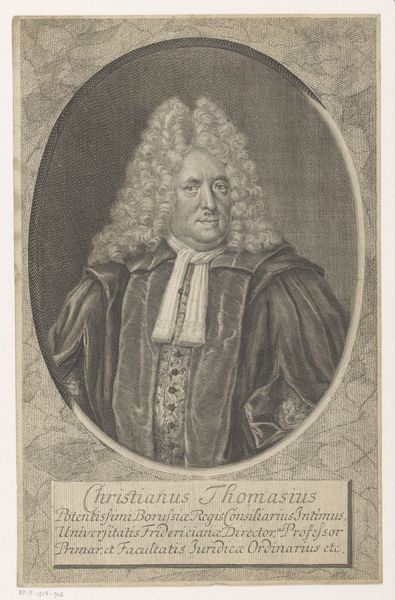
drawing, print, engraving
#
portrait
#
drawing
#
baroque
# print
#
old engraving style
#
historical photography
#
engraving
Dimensions: height 525 mm, width 355 mm
Copyright: Rijks Museum: Open Domain
Curator: Here in the Rijksmuseum, we have an intriguing engraving: a portrait of Frédéric Leonard, dating from between 1689 and 1707. It’s attributed to Gérard Edelinck. Editor: It's immediately striking. The sheer volume of detail, especially in the wig, feels almost decadent. You can nearly feel the weight of it! Curator: Indeed. Leonard was the printer to the King and the Clergy of France, so his elaborate presentation reflects his position within the French court. Edelinck, himself a prominent engraver, likely understood the importance of portraying Leonard with the appropriate gravitas. Editor: It's amazing what engravers could do! Looking closer, you notice the textural differences, not just in the fabrics, but in the rendering of skin versus hair. It’s meticulous labor made for an influential clientele. You also get a sense of the paper’s importance and availability during the late 17th century, suggesting a significant culture of documenting images and communicating ideas through the print medium. Curator: The portrait is more than just a representation of wealth; it signals cultural capital. The books in the background allude to knowledge and power. Notice also Leonard's gesture: it is confident and commanding, speaking to his agency and active role in publishing. Editor: Do you think that posture is also somewhat artificial? I get the sense that he wasn't always so comfortable or elevated but required, nonetheless, to adopt this attitude for representation's sake. Curator: Possibly. Baroque portraiture often demanded a degree of performativity. However, this does speak to your point of materiality. What kind of performance is produced for the circulation of the prints, for the production of portraiture’s very logic? Leonard may have actively participated in this performance, as well as have his persona produced by it. Editor: It's captivating how the tools of image reproduction also served in the era’s self-construction. Considering what it takes to make and preserve objects like this puts its display in museums into an entirely new light. Curator: Precisely. Reflecting on its journey over centuries changes how we think about its place today in this museum.
Comments
No comments
Be the first to comment and join the conversation on the ultimate creative platform.
